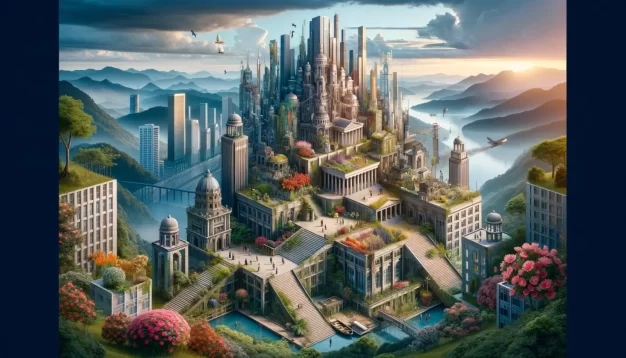
Understanding Depth in Photography
The Concept of Depth
Depth in photography refers to the perception of distance or three-dimensionality within a two-dimensional image. It’s the illusion that elements are layered from front to back within a photo, giving a sense of space and volume.
Importance of Depth for Visual Impact
Capturing depth is crucial for creating dynamic images that draw viewers into the scene. It adds realism and context to photographs, allowing subjects to stand out against their backgrounds and making compositions more engaging.
Layering in Photographic Composition
What is Layering?
Layering involves arranging elements at different distances from the camera to create a sense of depth. It’s a compositional technique that makes use of foreground, middle ground, and background to build a complex, richly detailed scene.
The Role of Layers in Creating Depth
Layers act as visual steps that lead the eye through the image. By clearly delineating these planes, photographers create a journey for the viewer, enhancing the three-dimensional feel of the photograph.
Equipment and Settings for Depth and Layering
Best Lenses for Depth
Wide-angle lenses are stellar for exaggerating depth because they have a greater depth of field and capture more of the scene. Telephoto lenses, on the other hand, can compress space, making layers more distinct.
Camera Settings for Optimal Layering
A small aperture (large f-number) maintains sharpness across multiple layers. Controlling focus points is also key—manually selecting where to focus can significantly affect the perception of depth.
Techniques to Achieve Depth and Layering
Foreground Interest
Introducing elements in the foreground can provide a point of entry and scale, making the scene more relatable and anchored.
Use of Leading Lines and Diagonals
Lines and diagonals act as narrative pathways, guiding the eye and emphasizing the depth from foreground to background.
Aperture and Depth of Field
Manipulating aperture controls depth of field—wide apertures (small f-numbers) isolate subjects with a shallow depth of field, while narrow apertures (large f-numbers) keep more of the scene in focus.
Creative Use of Focus
Selective Focusing Techniques
Selective focus is about isolating a subject by making it sharp against a blurred backdrop. This draws attention directly to the subject and adds depth through contrast.
Bokeh and Background Separation
Bokeh—the pleasing quality of out-of-focus areas—can create a sense of depth by separating the subject from its surroundings, making it leap off the image.
Lighting and Its Effect on Depth
Directional Light for Shadows
Directional light can sculpt a scene, creating shadows that hint at the contours and textures of subjects, enhancing the perception of depth.
Soft vs. Hard Light on Layers
Soft light tends to flatten a scene, while hard light, with its pronounced shadows, can reinforce the perception of different layers.
Post-Processing Tips for Enhancing Depth
Adjusting Contrast and Clarity
Boosting contrast can make layers pop, and increasing clarity will bring out details, especially in the foreground, giving the image more depth.
Layer Masks and Blending Modes
Layer masks in editing software allow for non-destructive adjustments to specific parts of an image, enhancing depth by selectively controlling the visibility of layers. Blending modes can be used to merge layers in a way that emphasizes depth cues.
In sum, depth and layering are not mere tricks of the trade but essential tools for breathing life into photographs. They bring a compelling sense of reality to the flat canvas of an image, inviting viewers to step inside the frame. Whether a novice or a seasoned pro, harnessing these techniques can transform snapshots into stories, providing a window into the world as rich and textured as our own three-dimensional experience.